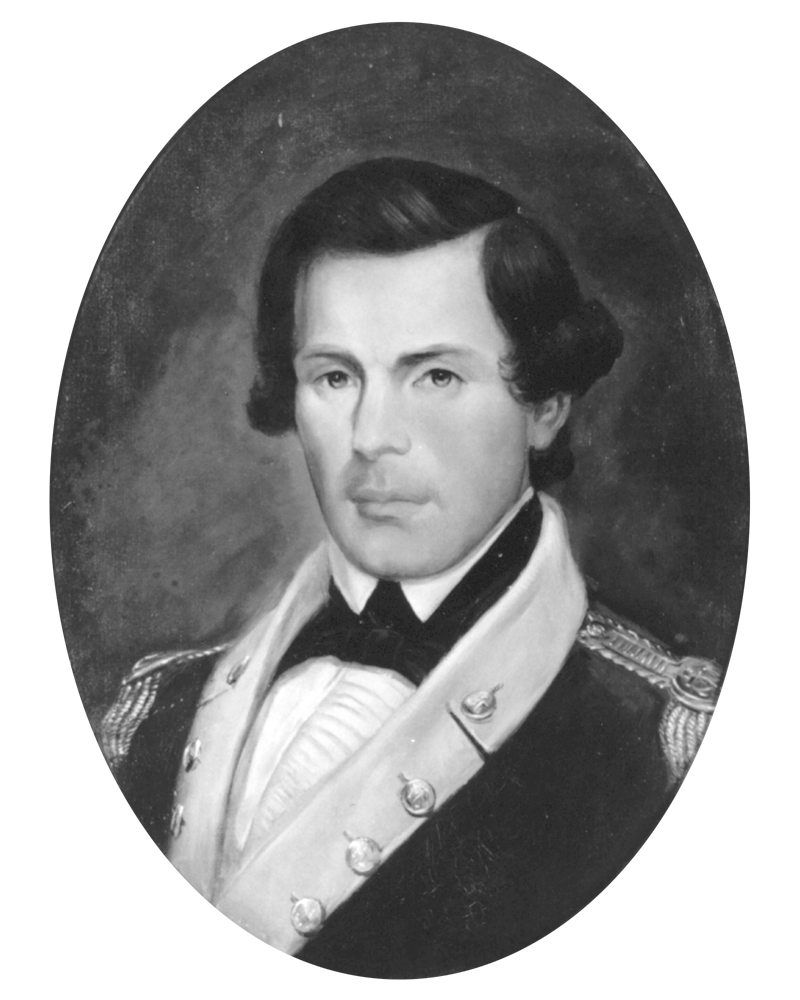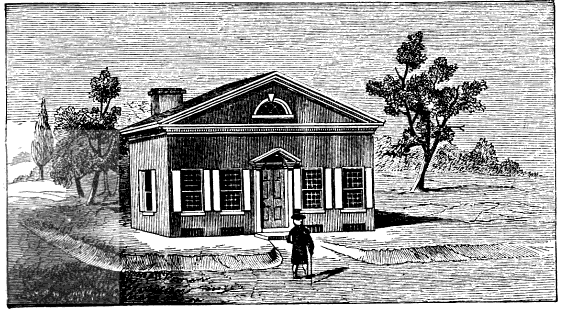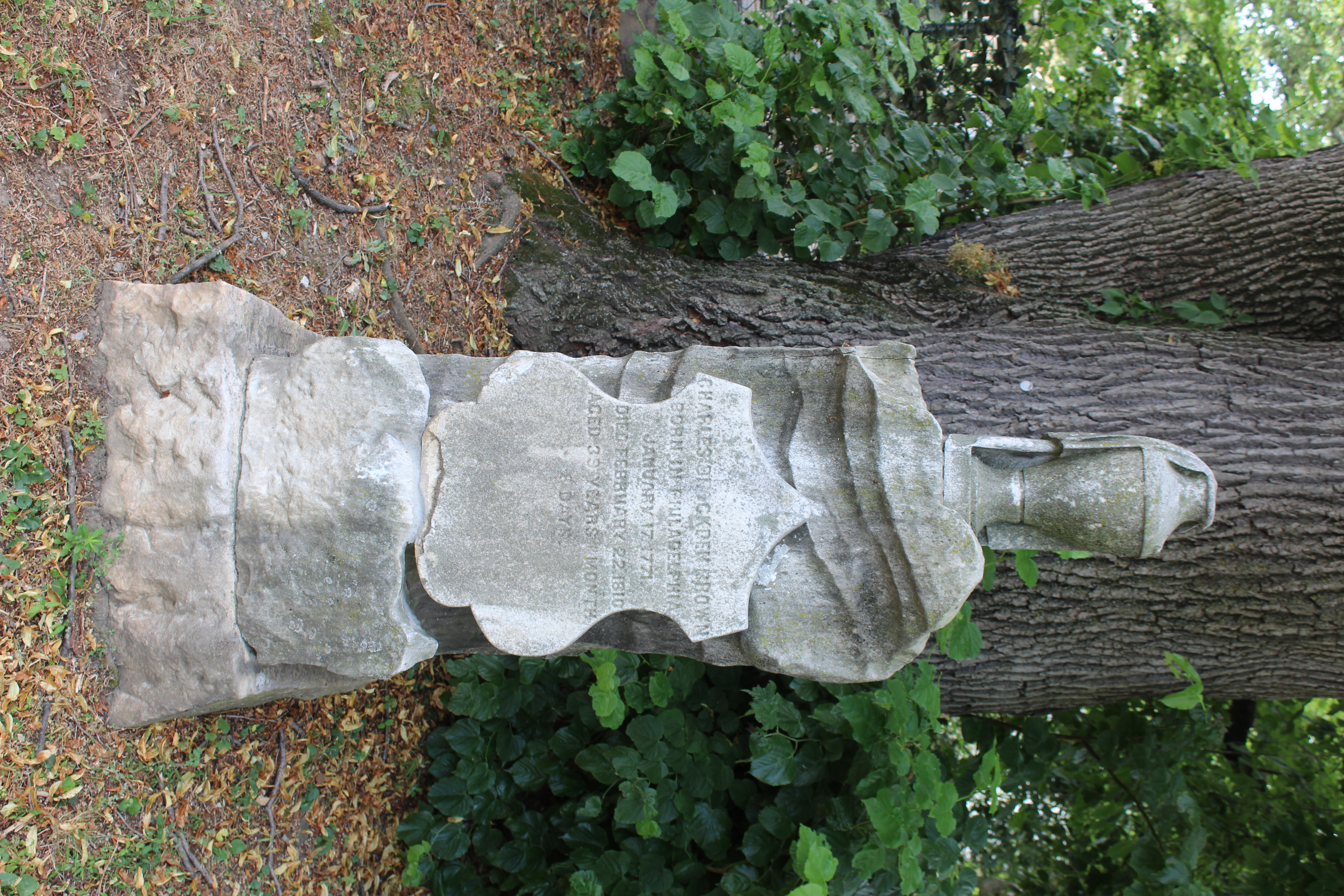|
Arch Street Friends Meeting House
__NOTOC__ The Arch Street Meeting House, at 320 Arch Street at the corner of 4th Street in the Old City neighborhood of Philadelphia, Pennsylvania, is a Meeting House of the Religious Society of Friends (Quakers). Built to reflect Friends' testimonies of simplicity and equality, this building is little changed after more than two centuries of continuous use. Pennsylvania founder and Quaker William Penn deeded land to the Society of Friends in 1701 to be used as a burial ground. The east wing and center of the meetinghouse was built between 1803 and 1805 according to a design by the Quaker master-builder Owen Biddle Jr. Biddle is best known as the author of a builder's handbook, ''The Young Carpenter's Assistant'', published in 1805. The building was enlarged in 1810–11, with the addition of the west wing. Architects Walter Ferris Price and Morris & Erskine also contributed to the design and construction of the building. The firm Cope & Lippincott renovated the interior ... [...More Info...] [...Related Items...] OR: [Wikipedia] [Google] [Baidu] [Amazon] |
Arch Street (Philadelphia)
Arch Street is a major east-west street in Center City, Philadelphia, Center City Philadelphia, Pennsylvania, United States. Location Arch Street runs from the Delaware River one way westbound through the Old City, Philadelphia, Old City section of Philadelphia, where landmarks include the Arch Street Friends Meeting House, the Betsy Ross House, Girard Fountain Park, the United States Mint, U.S. Mint, and Christ Church Burial Ground. It crosses Independence National Historical Park, Independence Mall at 5th and 6th Streets, traverses Philadelphia's Chinatown, Philadelphia, Chinatown neighborhood, and passes Reading Terminal Market. The tourist areas around Logan Circle (Philadelphia), Logan Square and the museum district are just north of Arch Street, which ends just east of the Schuylkill River at 23rd Street. West of the river, there is a block of Arch Street between 30th Street Station and Cira Centre. Arch Street also runs eastbound one-way from 49th Street to 63rd Street. ... [...More Info...] [...Related Items...] OR: [Wikipedia] [Google] [Baidu] [Amazon] |
Pennsylvania Historical And Museum Commission
The Pennsylvania Historical and Museum Commission (PHMC) is the governmental agency of the Commonwealth of Pennsylvania, responsible for the collection, conservation, and interpretation of Pennsylvania's heritage. The commission cares for historical manuscripts, public records, and objects of historical interest; museums; archeology; publications; historic sites and properties; historic preservation; geographic names; and the promotion of public interest in Pennsylvania history. PHMC was established on June 6, 1945, by state Act No. 446, merging the Pennsylvania Historical Commission (PHC), The State Museum of Pennsylvania, and Pennsylvania State Archives. Historical marker program The PHMC administers the Historical Marker Program, which, when it began in 1914, installed metal plaques onto large rocks and boulders to commemorate individuals, events, and landmarks throughout the state. The Pennsylvania Historical Commission, the predecessor to the PHMC, launched the program ... [...More Info...] [...Related Items...] OR: [Wikipedia] [Google] [Baidu] [Amazon] |
American Philosophical Society
The American Philosophical Society (APS) is an American scholarly organization and learned society founded in 1743 in Philadelphia that promotes knowledge in the humanities and natural sciences through research, professional meetings, publications, source text, library resources, and community outreach. It was founded by the polymath Benjamin Franklin and is considered the first learned society founded in what became the United States.Philosophical Hall, the society's headquarters and a museum, is located just east of Independence Hall in Independence National Historical Park. In 1965, in recognition of the building's history, it was designated a National Historic Landmark. The society has about 1,000 elected members. As of April 2020, 5,710 members had been inducted since its creation. Through research grants, published journals, the American Philosophical Society Museum, an extensive library, and regular meetings, the society supports a variety of disciplines in the humanitie ... [...More Info...] [...Related Items...] OR: [Wikipedia] [Google] [Baidu] [Amazon] |
Caspar Wistar (physician)
Caspar Wistar (September 13, 1761January 22, 1818) was an Americans, American physician and Anatomy, anatomist. He is sometimes referred to as Caspar Wistar the Younger, to distinguish him from Caspar Wistar (glassmaker), his grandfather of the same name. The plant genus ''Wisteria'' is named for him. Biography He was born at Philadelphia, Pennsylvania, the son of Richard Wistar (1727–1781) and Sarah Wyatt (1733–1771). He was the grandson of Caspar Wistar (glassmaker), Caspar Wistar (1696–1752), a Germany, German immigrant, Religious Society of Friends, Quaker and glassmaker. Education He was educated at the Friends' school in his native city, where he received a thorough Classics, classical training. His interest in medicine began while he was aiding in the care of the wounded after the battle of Germantown, and he made his first studies under the direction of Dr. John Redman (physician), John Redman. He studied medicine, first at the University of Pennsylvania (receivin ... [...More Info...] [...Related Items...] OR: [Wikipedia] [Google] [Baidu] [Amazon] |
Robert Waln
Robert Waln (February 22, 1765January 24, 1836) was a United States representative from Pennsylvania. Born in Philadelphia in the Province of Pennsylvania, he received a limited schooling, engaged in mercantile pursuits and in East India and China trade, was a member of the Pennsylvania Legislature for several years, and was a member of the city council of Philadelphia, serving as president of the select council. Waln was elected as a Federalist to the Fifth Congress to fill the vacancy caused by the death of John Swanwick. He was reelected to the Sixth Congress and served from December 3, 1798, to March 3, 1801. He became interested in the operation of ironworks and during the War of 1812 erected a cotton factory in Trenton, New Jersey. He served as president of the Philadelphia Insurance Co. and as a trustee of the University of Pennsylvania. He died in Philadelphia; interment was in Arch Street Friends Meeting House Burial Ground. References External links * * ThSmith-Waln ... [...More Info...] [...Related Items...] OR: [Wikipedia] [Google] [Baidu] [Amazon] |
The Philadelphia Inquirer
''The Philadelphia Inquirer'', often referred to simply as ''The Inquirer'', is a daily newspaper headquartered in Philadelphia, Pennsylvania. Founded on June 1, 1829, ''The Philadelphia Inquirer'' is the third-longest continuously operating daily newspaper in the United States. The newspaper has the largest circulation of any newspaper in both Pennsylvania and the Delaware Valley metropolitan region, which includes Philadelphia and its surrounding communities in southeastern Pennsylvania, South Jersey, northern Delaware, and the northern Eastern Shore of Maryland. As of 2020, the newspaper has the 17th-largest circulation of any newspaper in the United States As of 2020, ''The Inquirer'' has won 20 Pulitzer Prizes. Several decades after its 1829 founding, ''The Inquirer'' began emerging as one of the nation's major newspapers during the American Civil War. Its circulation dropped after the Civil War's conclusion, but it rose again by the end of the 19th century. Originally sup ... [...More Info...] [...Related Items...] OR: [Wikipedia] [Google] [Baidu] [Amazon] |
United States Marine Corps
The United States Marine Corps (USMC), also referred to as the United States Marines or simply the Marines, is the maritime land force service branch of the United States Department of Defense. It is responsible for conducting expeditionary and amphibious operations through combined arms, implementing its own infantry, artillery, aerial, and special operations forces. The U.S. Marine Corps is one of the six armed forces of the United States and one of the eight uniformed services of the United States. The Marine Corps has been part of the United States Department of the Navy since 30 June 1834 with its sister service, the United States Navy. The USMC operates installations on land and aboard sea-going amphibious warfare ships around the world. Additionally, several of the Marines' tactical aviation squadrons, primarily Marine Fighter Attack squadrons, are also embedded in Navy carrier air wings and operate from the aircraft carriers. The history of the Marine ... [...More Info...] [...Related Items...] OR: [Wikipedia] [Google] [Baidu] [Amazon] |
Samuel Nicholas
Samuel Nicholas (1744 – August 27, 1790) was an American Marine and military officer who was the first officer commissioned in the United States Continental Marines (predecessor to the United States Marine Corps) and by tradition is considered to be the first Commandant of the Marine Corps. Early life Nicholas was born in Philadelphia, Pennsylvania, in 1744, the youngest of three, to Anthony and Mary (Shute Cowman) Nicholas. His father was a blacksmith, un-Friended by the Philadelphia Meeting in 1749 for "Evil Conduct in frequent drinking strong Liquor to Excess," and died when Samuel was 7. His mother, Mary Shute Nicholas, had died the year before. He was then taken in by his uncle, Attwood Shute, the Mayor of Philadelphia (1756–1758). In January 1752, his uncle enrolled him at the Academy and College of Philadelphia (now the University of Pennsylvania), the secondary-school counterpart of the College. Nicholas was a student there until the end of 175While at school, ... [...More Info...] [...Related Items...] OR: [Wikipedia] [Google] [Baidu] [Amazon] |
James Logan (statesman)
James Logan (20 October 167431 October 1751) was a Scotch-Irish Americans, Scots-Irish Thirteen Colonies, colonial American statesman, administrator, and scholar who served as the fourteenth mayor of Philadelphia and held a number of other public offices. Logan was born in the town of Lurgan in County Armagh, Kingdom of Ireland, Ireland to Ulster Scots people, Ulster Scots Quakers. He served as colonial secretary to William Penn. He was a founding trustee of the Academy and College of Philadelphia, College of Philadelphia, the predecessor of the University of Pennsylvania. Early life Logan was born in Lurgan, County Armagh in present-day Northern Ireland, on 20 October 1674, to parents Patrick Logan (1640–1700) and Isabella, Lady Hume (1647–1722), who married in early 1671, in Midlothian, Scotland. His father had a Master of Arts degree from the University of Edinburgh, and originally was an Anglican clergyman before converting to Quakers, Quakerism. James Logan apprentice ... [...More Info...] [...Related Items...] OR: [Wikipedia] [Google] [Baidu] [Amazon] |
Lydia Darrah
Lydia Darragh (1729 – December 28, 1789) was an Irishwoman said to have crossed the lines during the British occupation of Philadelphia, Pennsylvania during the American Revolutionary War, delivering information to George Washington and the Continental Army that warned them of a pending British attack. Contemporary sources claim Darragh's uncorroborated story is historically unsubstantiated. "Family legend contributes the colorful but uncorroborated story of Lydia Darragh and her listening post for eavesdropping on the British." Early life Lydia Barrington was born in 1729 in Dublin to John and Mary (Aldridge) Barrington, the youngest child of six. On November 2, 1753, she married the family's tutor, William Darragh, the son of a clergyman. A few years later, they emigrated to Philadelphia, where William worked as a tutor and Lydia as a midwife. She gave birth to nine children, but sadly, four of them died at birth: Hunter, Connor, Caira, and Nora. The surviving children were ... [...More Info...] [...Related Items...] OR: [Wikipedia] [Google] [Baidu] [Amazon] |
Samuel Carpenter
Samuel Carpenter (4 November 1649 – 10 April 1714) was a Deputy Governor of Province of Pennsylvania, colonial Pennsylvania. He signed the historic document "The Declaration of Fealty, Christian Belief and Test" dated 10 September 1695; the original is in the Historical Society of Pennsylvania. Samuel was also called the "First Treasurer" of Pennsylvania, and was a partner and friend of proprietor William Penn. Early life Born in Horsham, Sussex, England, Samuel was baptised in the Church of St. Mary's Horsham on 20 December 1649. He was the youngest son of John Carpenter, the Sheriff of Horsham, who was murdered while attending his duties in Horsham on 9 August 1671, by his second wife Sarah (maiden name unknown). His ancestry, claimed by General Louis H. Carpenter, claims descent from a Thomas Carpenter who married Ales or Alice Fiste, a widow, at St. Mary's Parish Church in Horsham on 20 May 1565.Samuel Carpenter and his Descendants' compiled by Edward Carpenter & his so ... [...More Info...] [...Related Items...] OR: [Wikipedia] [Google] [Baidu] [Amazon] |
Charles Brockden Brown
Charles Brockden Brown (January 17, 1771 – February 22, 1810) was an American novelist, historian, and magazine editor, editor of the Early National period. Brown is regarded by some scholars as the most important American novelist before James Fenimore Cooper. Although Brown was not the first American novelist, as some early criticism claimed, the breadth and complexity of his achievement as a writer in multiple genres (novels, short story, short stories, essays and Magazine, periodical writings, poetry, historiography, and reviews) makes him a crucial figure in literature of the early republic. His best-known works include Wieland (novel), ''Wieland'' and ''Edgar Huntly'', both of which display his characteristic interest in Gothic fiction, Gothic themes. He has been referred to as the "Father of the American Novel." Biography Early life Brown was born on January 17, 1771, the fourth of five brothers and six surviving siblings in a Philadelphia Quaker merchant family. His ... [...More Info...] [...Related Items...] OR: [Wikipedia] [Google] [Baidu] [Amazon] |





